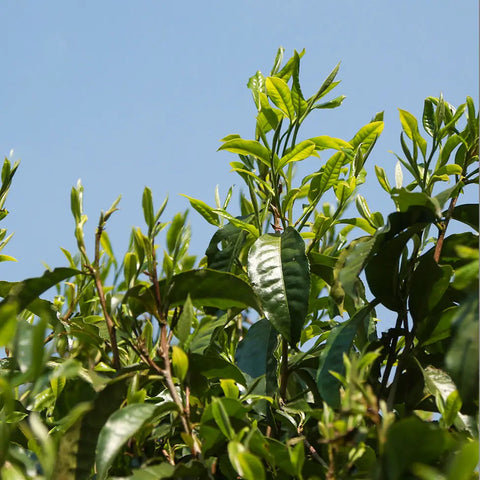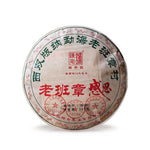Why Is Pu Erh Tea So Expensive
Pu Erh tea, known for its unique flavor and aging process, originates from Yunnan Province in China. It has a rich history, distinctive cultivation regions, and a meticulous production process.
Origins and History
Pu Erh tea dates back over a thousand years. It was first cultivated during the Tang Dynasty (618-907 AD), making it one of the oldest forms of tea. Originating from the city of Pu'er in Yunnan Province, this tea quickly became a staple in trade routes, often referenced as the "Tea-Horse Road." Historical records show its use in traditional Chinese medicine for its perceived health benefits. The aging process is essential, providing a distinct and evolving flavor profile that differentiates it from other teas.
Cultivation Regions
Yunnan Province is the primary region for cultivating Pu Erh tea. The region's high altitude, abundant rainfall, and fertile soil contribute to the tea's unique characteristics. The famous growing areas include Xishuangbanna, Lincang, and Pu’er. Tea plants known as Camellia sinensis assamica are used, which are typically larger-leafed than those used in other regions. Ancient tea trees, some over a hundred years old, are often cultivated, contributing to the tea's high value and rarity.
Bestsellers
Production Process
The production of Pu Erh tea is detailed and time-intensive. It involves several steps, starting with the harvesting of mature tea leaves. These leaves are initially withered, then pan-fired to prevent oxidation. Following this, leaves are rolled and sun-dried, creating what is known as "Maocha." For raw Pu Erh, Maocha is directly compressed into cakes and aged. For ripe Pu Erh, Maocha undergoes artificial fermentation before compression. This fermentation can last several months, giving the tea its dark color and rich, earthy flavor. Each step is crucial in developing the tea's complex profile and ensuring its quality.
Factors Contributing to High Cost

Pu-erh tea commands a high price due to its aging process, intricate production methods, and scarcity of the finest teas. Each factor plays a crucial role in defining the value and exclusivity of this esteemed tea.
Aging and Maturation
Pu-erh tea improves with age. This aging process can range from a few years to several decades. The longer the tea is aged, the more complex its flavor profile becomes. This gradual maturation requires controlled storage conditions and constant monitoring.
Aged pu-erh is often more valued, much like a fine wine. Its transformation in taste and potential health benefits make it highly sought after. Collectors and connoisseurs are willing to pay a premium for well-aged batches.
Labor-Intensive Manufacturing
The production of pu-erh tea is labor-intensive. It involves several steps, including plucking, sun-drying, pan-frying, rolling, fermentation, and pressing into cakes. Each step requires precision and skill, especially during fermentation.
Traditional methods are often preferred, relying on handcraftsmanship. This intricate process results in higher production costs. The effort put into ensuring quality across each step justifies the higher price tag.
Limited Availability and Rarity
Pu-erh tea’s rarity significantly contributes to its high cost. Authentic pu-erh is produced exclusively in Yunnan Province, China. Specific regions, like Xishuangbanna, are famous for producing the finest leaves.
The availability of older, well-preserved teas is limited. Many of the best pu-erh teas are produced in small quantities, contributing to their exclusivity. Limited supply against high demand drives prices upward, making pu-erh tea a luxury item.
Types of Pu Erh Tea
Pu Erh tea is categorized into two main types: Raw (Sheng) and Ripe (Shou). Additionally, different grades of Pu Erh tea exist, influencing its price and quality.
Raw (Sheng) vs. Ripe (Shou)
- Fermentation: Naturally fermented over many years.
- Flavor Profile: Starts bright, astringent, and grassy; develops more complex, mellow flavors as it ages.
- Appearance: Greenish leaves when young, turning darker with age.
- Price: Generally more expensive due to the longer aging process.
Ripe (Shou) Pu Erh:
Lao Ban Zhang
- Fermentation: Accelerated fermentation, mimicking aged Sheng tea.
- Flavor Profile: Earthy, rich, and smooth; lacks the astringency of Raw Pu Erh.
- Appearance: Dark brown or black leaves.
- Price: Usually less expensive compared to aged Raw Pu Erh.
Understanding these differences helps in making informed choices.
Grades of Pu Erh Tea
Factors Influencing Grades:
- Leaf Quality: Higher grade teas use young, tender leaves; lower grades may include more stems or older leaves.
- Processing: Consistent high-quality processing results in higher grades.
- Appearance: Uniformity in leaf size and shape is a key indicator.
Grade Categories:
- Premium: Made from young leaves, meticulously processed; most sought-after.
- Medium: Good quality leaves; balanced taste and appearance.
- Lower Grades: May contain stems and older leaves; suitable for everyday drinking.
Choosing the right grade affects both the experience and cost.
Economic Aspects

Pu-erh tea's cost can be attributed to market demand and its potential as an investment.
Market Demand
The demand for pu-erh tea has been rising globally. There is a growing appreciation for its unique aging properties and health benefits. These factors drive up demand in countries like China, the United States, and Europe.
Limited production further exacerbates high prices. Pu-erh is produced exclusively in Yunnan, China. The geographical restriction on production areas contributes to the scarcity of the tea.
The rise in popularity among tea enthusiasts and collectors also plays a role. They are willing to pay premium prices for high-quality, aged pu-erh.
Investment and Collectibility
Pu-erh tea is often seen as a valuable investment. Similar to fine wines, its value can increase over time. Aged pu-erh, especially those with several decades of maturation, can command exceptionally high prices.
Collectors see aged pu-erh as both a consumable and an asset. The aging process enhances its flavor profile, making old, well-preserved teas highly sought after.
Market speculation impacts prices too. As investors seek out older, rarer batches, the market price can rise sharply. Properly stored aged pu-erh can fetch thousands of dollars per kilogram. This potential for monetary return attracts more investors into the market.
Quality Assessment
Evaluating the quality of Pu-erh tea involves examining multiple factors such as the taste profile and expert evaluations. Both aspects play a pivotal role in determining the overall value and price of the tea.
Taste Profile Comparison
The taste of Pu-erh tea varies significantly depending on factors like age and processing methods. Younger raw Pu-erh tea tends to be more astringent with vegetal notes, while aged Pu-erh develops complex flavors including earthiness, sweetness, and woody tones.
In contrast, cooked Pu-erh usually possesses smoother, darker, and sometimes even sweet characteristics. It is crucial to compare these taste profiles as they heavily influence the perceived quality and, therefore, the price.
Expert Evaluation
Tea experts assess Pu-erh tea based on various criteria including leaf quality, aroma, and color. The leaves should be whole, consistent, and well-preserved. The aroma needs to be clean and aromatic without any musty odors, indicating proper fermentation and storage.
Color is also significant; a vibrant and clear liquid shows high-quality processing. Expert evaluations are critical in distinguishing high-quality Pu-erh from lower-grade variations, further justifying its often high cost.
Health Benefits and Claims

Pu-erh tea is often celebrated for its potential health benefits. You might hear claims about its positive effects on your metabolism and digestion.
Some enthusiasts believe that pu-erh tea can aid in weight loss. The compounds in the tea, such as caffeine and catechins, are thought to help increase your metabolic rate.
Other potential benefits:
- Improved digestion: Pu-erh tea is said to help with digestion, making it a popular choice after meals.
- Cholesterol reduction: Some studies suggest that drinking pu-erh tea may help lower LDL cholesterol levels.
- Antioxidants: The tea is rich in antioxidants, which can help protect your cells from damage.
Though many believe in these benefits, it's important to note that individual results may vary, and more research is needed to fully understand the scope of these claims.
Here's a quick overview of the potential benefits:
| Benefit | Description |
|---|---|
| Weight Loss | May boost metabolism and aid in weight loss |
| Improved Digestion | Believed to aid in digestive processes |
| Cholesterol Reduction | May help lower bad cholesterol |
| Antioxidants | Contains compounds that protect cells |
When considering pu-erh tea for health benefits, always consult with a healthcare professional to ensure it complements your personal health plan.
Packaging and Presentation
The packaging of Pu-erh tea often involves elaborate, ornate designs. These designs not only aim to protect the tea but also to signify its quality and heritage.
You’ll notice that Pu-erh tea is frequently packaged in compressed forms, such as cakes, bricks, or tuo cha (bowl-shaped tea). These forms require specialized packaging to ensure the tea remains intact and uncontaminated.
Many high-end Pu-erh teas come in handmade wrappers made of special rice paper. This paper improves the aging process by allowing the tea to breathe.
Packaging aesthetics often feature traditional Chinese artwork, depicting elements like dragons, phoenixes, and landscapes. This creates an appealing presentation that attracts collectors and connoisseurs.
Retailers may also offer luxurious tea boxes or wooden chests, often lined with silk or velvet. These options elevate the tea's presentation, making it ideal for gifting or personal indulgence.
Remember, the combination of these factors contributes significantly to the high price of Pu-erh tea.
Counterfeits and Authenticity Verification

Pu erh tea, due to its popularity and high value, is often subject to counterfeiting. You need to be aware of several signs to ensure you are purchasing genuine pu erh tea.
Key Indicators of Authentic Pu Erh Tea:
- Source: Check if it is from Yunnan, China. Authentic pu erh comes from this region.
- Brand: Recognized brands are more likely to offer genuine products.
- Packaging: Examine the packaging for proper seals and correct labels.
Authenticity Verification Steps:
- Examine the Tea Leaves: Authentic pu erh usually has a distinct smell, texture, and color.
- Taste Test: Genuine pu erh tea has a wide range of flavors. It should not taste dull or flat.
- Consult Experts: Seek advice from tea experts or enthusiasts.
A comparison table can help understand the differences:
| Factor | Authentic Pu Erh | Counterfeit Pu Erh |
|---|---|---|
| Region | Yunnan, China | Various, often unspecified |
| Brand | Trusted, well-known | Unfamiliar, generic |
| Packaging | High quality, detailed | Poor quality, vague |
| Tea Leaves | Unique aroma and texture | Bland, inconsistent |
Counterfeits can affect your experience and investment. Implement these tips to enhance your chances of purchasing real pu erh tea.
← Older post Newer post →











